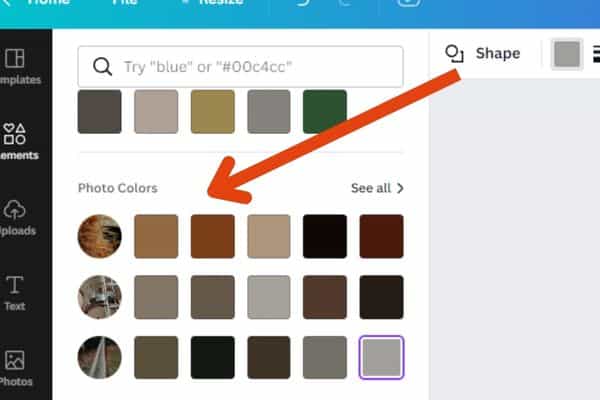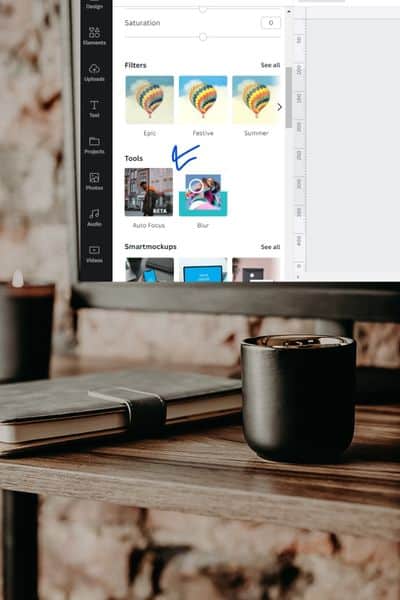Branding is important for every business, but it’s essential for a farm business owner to understand what is involved in branding and the ways in which they can do it so that it is effective.
If you want to brand your farm business so that you create brand loyalty, word-of-mouth advertising, as well as recognition, you’ll want to follow these steps.
Step #1: Know Your Audience
This is going to be something you hear often because it’s imperative. You cannot even create a product or recommend a product if you don’t know who your audience is, what their problems are, how you specifically can help them, and why. Plus, you need to know what their values are and how they prefer to communicate. It can take some time do hone but once you understand it you will be unstoppable.
Step #2: Figure Out Who Your Ideal Customer Is
Essentially you are boiling down your audience to one person and putting it on paper so you can use it as a guide.
This is going to be one page that shows who you are creating content for, who you are creating and finding products for, and it will give you a face and a name to think of during all your brainstorming. What age are they, what do they do for a living, what are their problems, where do they get their information, and so forth?
Step #3: Develop a Farm Brand Mission Statement
Some people call this a value statement but essentially, it’s just a couple of sentences that describe what you do, who you do it for, why you do it, and how you do it. Using this as your guide to what you promote or get involved with will be invaluable.
Step #4: Know Your Products
Whether you create your own products, recommend other people’s products, or you have a service, it doesn’t matter as much as your knowledge about the products and how they solve the problems of the ideal customer. Because people buy a transformation, not the product itself. You don’t buy a pair of Arait Jeans for the jeans themselves you buy their durability and or that they make you feel good wearing them.
Step #5: Learn What Colors Mean Don’t Just Pick Your Favorites
This might seem that it goes a step too far, but if you’re going to take branding seriously, it’s important to know the science behind color and how it affects the user. You don’t have to write a dissertation on color theory but teach yourself enough that you don’t choose colors based only on what you like or think, such as “pink” for girls and “blue” for boys. For example, green shows honesty. Knowing the meaning behind color is one more tool to help you show your ideal followers your farm brand personality.
Step #6: Create a Brand Templates
This is going to be what you look at before you write any content, create images, post on social and more. For example, it will include the fonts, colors, your mission, and even the tone of voice your farm brand uses when it talks.
Step #7: Implement Your Strategy
Publish your website, content, and information on the internet. Promote your website, your content, your information, and more via social media and collaborating with others. Pitch yourself to do interviews on podcasts, YouTube videos, and Facebook Live events. When you do, always keep your branding intact. It should be in your signatures, on your social media platforms, on your website, in your content, and of course apparent in your products, too. It doesn’t matter if you have the most beautiful farm brand in the world if no one knows about it.

How to Craft a Farm Brand That Resonates with Your Target Audience
As you work on the process of branding, you may be wondering how you can craft a farm brand image that resonates with your target audience while also looking good.
The amazing thing is that time and again, big businesses show that simple is usually best when it comes to branding.
To be successful with branding, you need to be consistent in your communication across all channels from the storefront office, to your signage, packaging, website, online and offline advertising, content you publish, and the products and services that you offer.
Your farm brand is the guide for everything you do in your business from user experience to SEO, content marketing, social media marketing, email, and even paid advertising. All these channels can work together if you’re consistent in your branding.
As you work through the branding process, ask and answer these questions:
Who is Your Target Audience?
When you define your target audience, you want to be very specific about who they are. Your target cannot be “all” of any group. They really do need to be a subset of a group for your marketing to be targeted enough to get attention.
Here is an example of someone who sells garden produce. ” Moms between the ages of 25 and 32 of school-aged kids who want to feed their kids healthy farm-raised food and wants and experience when cooking in the kitchen.”
What is Your Core Message?
To get to your core message, it might help you to develop a farm brand mission statement. A mission statement is a way for you to define what reason your business exists in the first place. You can use that core message (or parts of it) within your logo, tag line, voice messages, online trainings, eBooks, and so forth. The core message will define everything you do in the future from product creation to marketing.
For example: “To produce the best organic quality food that is packaged beautifully and creates a connection to the farmer.”

Bringing Your Audience & Message Together
As you can see, your target audience along with your core message work together to create a compelling reason for your audience to pay attention to you. It helps you stand out from the competition because the core message informs consistent messaging, quality products or services, and helps spread the message in an innovative way that resonates to the audience.
Example: UPS. Everything about them is about getting your stuff and not about having fun. They are generic in a lot of ways because they want their message to symbolize reliability. Brown boxes, minimal logo, and brown clothing all work together to deliver the utilitarian message of reliability.
As you can see, the main factor for developing your branding is your customer. It’s always the customer. The great thing is that you choose the customer. You’re the one who picks the ideal audience you want to work with the most.
You’re the one who finds out the problems the audience has that you can use your expertise to solve. You’re the one who chooses the audience and the products and services that you want to offer them. It’s up to you to ensure your branding resonates with them by understanding who they are.
Be Fun And Personal Not Buttoned Up And Stuffy
Something funny happens to people when they formally sit down to create their content and branding. They get too serious.
Yes, branding is all about business. However, branding is also something that should be fun. You need to let your personality shine through with your farm branding. You can have fun with it while still providing a very serious product or service to your ideal customer.
For Example, The hefty trashbag commercials, or the Pupperoni dog treats.
Brands don’t have to be dry and humorless to be professional. Don’t be afraid to let your personality shine through. Have fun with it.
For many audiences, humor helps you connect with your target audience and makes you memorable. Share the dumb things your animals do, and show the problems that happen in your garden.
The key is ensuring that the personality you put into your business matches everything else within the business. In other words, don’t talk out of two sides of your mouth.
In order to show more personality through your farm brand, you’ll want to first think about your audience and how they might respond. After all, it’s all about your audience, not you. Will will only find out how far to go with it based on what your target audience likes and responds well to.
You can get started interjecting personality into your brand with these simple tips.

Use More Images and Photos
Stock images are great, of course, we all use them. But, you can make your brand more personal by using more personal photos. You may need to be careful depending on your business model but including images of yourself, your customers, and the good that you do is a good way to share your personality more. This gets a little time-consuming but take a day twice a year to go take pictures to use in your business. It doesn’t have to be fancy. Go around your small farm and show what you do on a daily basis.
Write in First Person
Do this if your brand is your name or representative of a singular person. If it is a family farm you can use “we” or “our” but NEVER be stale or impersonal. This is how people lose sales.
Make Your Customer Your Hero
When telling your brand story, put the customer at the center of the story. Get personal with the details and talk about how you are able to help them. You want them to resonate with what you say and feel empathy for the story because that enables them to place themselves there, which almost ensures that they will become a customer.
Make Sure Your Farm Branding Aligns with Your Business Objectives
Does what you are creating and putting out there as a representation of your business show what you want as the outcome of your business?
Here is what I mean. In the rabbitry I don’t show my rabbits living in my home because I don’t think rabbits are the best indoor pets. But I also don’t want to attract the radical “rabbits must be indoors” type customer because they won’t be willing to listen to my guidance in caring for the french lop. I don’t promote indoor content on my social media or show the rabbits inside because I don’t want people to get the wrong impression. I show them posed and ready for showing as well. So people understand they are get a good quality animal.
The content you share, the products you create, the everyday interactions you have with your audience, and so forth must work together to achieve your objectives.
In fact, your brand’s strategy is always based on your company’s goals. If it’s not, you need to get clear on your objectives and build your brand from there.
The steps to ensuring consistency with your farm brand message should look like this:
1. Know Your Business Objectives
A business objective is a goal that you have for your business. Or something you want your business to do. For example, you may have a goal to provide excellent customer care, or you may be mission-driven based on your core values. Your goals are up to you but remember to put your audience first when making them. Make sure it is something they care about.
2. Know Your Target Audience
You must know exactly who you want to work with or make products for before you can create your business objectives. Even if you haven’t started yet, and have no audience, you can observe your competition’s audience. Read the comments of their social posts. What questions are they being asked? Use that to get started and tweak your content as you find out what YOUR audience wants. Another way to go about this is serving the person you used to be. What did you want or need when you dealt with that problem?
3. Develop Your Brand Message or Mission Statement That Talk About Your Goals
When you know what you are going to do, how to do it, for who, and why, it’s going to be a lot simpler to create objectives that match. Plus, when you write it all out in a short and simple tagline or mission statement sentence, it’s easier for you to follow and share.
4. Create Your Tagline
Using your mission statement and brand message, create a tagline for your business based on the results you plan to produce for your clients.
5. Choose A Business Name That is Flexible And In Alingment With Your Goals
Once you know what your business will do for your customers it will help to choose a name that fits your business goals and objectives. You can also choose a business name that is flexible in the sense that you can market almost anything under that name and it wont seem wird.
6. Design Your Logo, Fonts, Colors, and Image Style
Now is the time to paint your business pretty…. Or design your logo and brand guide based on your brand’s mission, your brand’s voice and message, and how you want your audience to feel.
Look at different symbols, colors, and fonts, and chose the ones that show the feelings in your audience that you are trying to attract. If you are not extremely feminine then different shades of pink would not be the best choice.
Here’s What Should Be in Your Farm Brand Marketing Toolkit
One way to systemize branding in order to ensure consistency is to create a branded marketing toolkit. This kit is going to include everything you need to promote your business through all types of marketing (online and offline) as well as whatever it takes to package your products or services.
This toolkit will set the standard for everything you do from brainstorming to creating, to promoting and selling and beyond. Your branded toolkit will consist of all the things you need to run your business.
- Brand Message
- Audience Profile
- The Buyer’s Journey
- Design Elements
- Content Marketing Templates
- Content Marketing Calendar
- Graphics Across Platforms
- Website/Landing Page
Putting everything together in a file in all the places you work so you are able to reference it often. This will help you keep your brand standardized while also allowing you to be more creative and save time.
What Do You Want Your Farm Brand to Stand For?
As you work on developing your brand, one of the factors you need to figure out is what your core message or big idea is and how that relates to your business. Your core message is so important for your success because it will help differentiate your offers from the rest in a way that speaks directly to your ideal customer.
Getting to the reason or why of what you do requires a little digging and research.
To develop your core message, ask yourself the following questions:
- 1) Who is your ideal customer?
- 2) What is your ideal customer’s problem(s)?
- 3) What is your solution to the problem(s)?
- 4) What results have you produced?
- 5) What makes you different from the competition? Why you?
You have to remember that everything you say impacts your brand. Because of this, it’s important to take the time to truly develop your brand so that you have an idea of how to answer people when they ask what you do.
If you cannot easily explain what you do, why you do it, who you do it for, and what makes you unique, people will just keep on walking. Not because they don’t think you are worth buying from but confused people don’t buy.
What do you want your customers to hear?
If you can step outside of yourself for a moment and focus on the message you want the customers to receive from you rather than what you want to say, it’s a lot easier to craft the message.
Think about what you want your customers to understand about your business AND what they need to know to become a customer. But also make sure to put yourself in their shoes. Becuase sometimes what we think is important isn’t want the customer cares about.
Figuring Out Your Farm Brand Name
There are a few things you need to think about before simply pulling a name out of a hat.
BUT I also don’t want you to stress over it too much. People don’t hear the name when they say it. They think of what the brand means to them.
The main thing to remember is the name should be easy to spell and memorable.
Think Of Your Overall Brand
Knowing your ideal customer and what they like, what type of personality would your brand have? Try assigning person-like characteristics to your brand.
For example, “honest, forthright, transparent” or “fun, sassy, and unfettered by societal norms.” Who would your ideal customer want to engage with?
Brainstorm Brand Name Ideas
Now that you have the customer in mind, and you know your brand’s personality, what are some names that you can come up with? It’s time to brainstorm. Just start writing down ideas. Remember to keep it simple, use word association, use your thesaurus, do a google search, and keep track in a spreadsheet.
Consider Odd Or Miss Spelled Words Carefully
It can be fun to be clever. After all, some well-known businesses have done it and succeeded – like Nike, Amazon, and others. But you don’t want to spend years explaining your business name to anyone. If people don’t understand it or have a hard time reading it they won’t bother to figure it out or try to remember.
Consider Your Own Name
For some small business owners, they may want to use their own name in their branding because to them their entire business is them.
They are the personification of what they do and who they do it for. That’s fine. Just keep in mind that this business is harder to exit a business when the name is you than the one you name differently. But for most small farmers this isn’t an issue because they tend to name it after a family name or something like “Oak Hill Farm”.
Check for Availability
Once you have some ideas that resonate ( you should have at least 5) check out their availability.
You’ll want to check to see if the name is taken via trademark, copywrite, or otherwise. Then find out if you can buy the domain. Use something like Godaddy to find out if the domain is in use. One caution is that you may want to go ahead and buy any domain that is available for now.
You should also check social platforms to see if there is someone else using the name you want to use. Try to get all the different handles as close together as possible. If I can’t get @leahlynch then I throw blog at the end of it.
How to Write Your Branding Message & Craft Your Tagline
You are basically taking your brand message like you worked out before and making it as short as possible. You want people to know what you do from reading this short sentence.
Make it Memorable
Creating a tagline that is easy to remember is the key to success of that tagline. This is also going to be visible on almost everything for your business. So it needs to fit in most spaces like in your social bios and on your website. Look at other taglines that you like to see what sticks and works best.
For example:
- Nike: “Just Do It.”
- M&Ms: “Melts in Your Mouth, Not in Your Hand”
- L’Oréal: “Because You’re Worth it.”
- Bounty: “The Quicker Picker Upper!”
These are well-known taglines that most people remember just because they work so well with the product.
But your farm business tagline can be a few more words if you need it to be.
Here is mine for the overall business.
“A country lifestyle that doesn’t leave you broke and burnt out”
Keep It Simple
A tagline that is too complicated won’t work well. A mission statement or branding message can be longer to help you narrow down your tagline, but the tagline needs to be very short and sweet and simple and to the point. It should make an impact without taking a long time to say it or think it.
Stand Out
Another thing to consider when creating your tagline is that you want to stand out from your competition. Look at your competition’s logos and taglines so that you can brainstorm ways to fill in the gaps left by your competitors and wow your ideal audience. The thing that makes you different can offer insight into a new tagline.
Finally, any tagline that you create should consider your target audience first and foremost. The best way to come up with a good tagline is to think about the results you offer them in terms of solving their problems. Then craft your tagline around that.
Tell Stories And Sharing Your Journey To Build Your Farm Brand
Building your farm brand is all about telling your story in a way that resonates with your ideal customer.
This can be hard for small farmers because what is fun about vegetables or daily work raising animals? But sharing what you do is what builds a connection with your customers. It takes practice but is well worth it if you are willing to try.
Make it Meaningful
There is a lot of content out there competing with your audience’s time. Make the content you deliver worth their while. Always have a purpose for posting socomething.
It should do one of three things.
- Educate
- Entertain
- Build Conection
Keep it Simple
People these days don’t have the patience to read huge bodies of text. But if you make it interesting and share only want is needed to get the point across people will still pay attention.
Split the text up into short paragraphs. Bold the things that are important for your readers to catch. And even italicize important words or use emojies to add personality to your content.😜
Make It Personal
The story of your brand is personal to you, but it’s also personal to your ideal customer. It matters to them because it improves their lives.
When you go to post something ask yourself “how can I improve their lives?” What do they need to know to use my product or how will this help them want what I do sell.
If you grow produce show them how to cook it. Share recipes and tips to keep it fresh longer.
If you raise animals share care posts (or recipes if it is for meat). But also show them behind the scene of you doing chores and even when things don’t go so well. Even if people are too far to buy from you they will feel connected and follow you for the story to see what is going happening on your farm. This builds engagement and helps push your content out to more people.
Bring In Emotion
When you can stimulate an emotional response to your story, whether that emotion is sadness, anger, or happiness, it will make a big difference in how your audience responds. If your words can trigger your audience to feel as if they relate or empathize, you can hook them in a much stronger and more permanent way.
Be Authentic Always
Finally, your story should be authentic. It is your story, after all. While you will tell it in a customer-centric way, it’s still your story, and it needs to be honest and give your audience insight into who your brand (and possibly you) are in an impactful way.
How To Use Your Branding In Real Life
Now it’s time to start putting it all together. How do you use the words, colors, fonts, and images to show your brand?
The Colors You Pick
When you choose the colors they should blend well and be soothing, not shocking. They should also align with and enhance your business objectives.
Here is an excellent place to learn about colors. You simply click on a color splotch to learn more about that color and canva will also give you color options that go well with it.
Here is one other point I want to make about choosing colors. If you are going to take your own photos and edit them a certain way or use editing presets for social media. You should choose colors around the pictures you tend to take. If you don’t there will be a disconnect between your photos and brand colors you use on your social platforms and your website.

Upload two or three photos that show a well-rounded representation of your brand and what you will post about across platforms regularly into Canva and if you scroll down you should see blocks of colors that canva has pulled from the photos you uploaded.

If you don’t like that there is a free google chrome extension called color picker that you can use to find the color code for any color you see on the web that you like.
Your Brand’s Tone of Voice
Since your brand has a character, that means it also has a voice. For example, if you are producing food for professional women in a city your tone and voice will be very different than if your audience is a young, stay-at-home, homeschooling mother.
On top of that, you should use words that you as the business owner use often. This is one way to stand out. A personal example for me and the blog is I say things like anywho’s, with that said, does that make sense? It doesn’t have to be anything crazy. Just use words that you catch yourself saying…
Use these words in any type of content you create. Emails, social posts, blog posts, and even saying them in the videos you create.
The Images You Use
Oh, stock images. They are great but they also are so overused and impersonal. But I also realize that we only have so much time to do the work. So take photos when you can but also use stock images when you have to. Canva is going to be the safest place to find stock images. BUT they are often limited for small farmers and finding specific breeds of animals…. Yeah, good luck.
When you develop your brand, it’s a good idea to decide what type of imagery you’re going to use (or not use) for blog posts, newsletters, social media, ads, and so forth. I won’t use a stock photo that has man hands in it because being a female writer that would make it extremely obvious that it wasn’t me. I am also not a huge pink lover so I don’t use overly girly images or glittery photos.
Think through things that would feel untrue to your brand if they were in a photo and create a “don’t use” list if you need to.
The Emotions You Evoke
Based on your brand’s personality, the problems you solve, and the content you publish, you can evoke specific emotions from your audience. What emotions do you want to evoke? Do you want to make your readers feel like they CAN do something when they might feel like they can’t? Do you as the teacher want to feel approachable? Or maybe you want to drop some humor in your content to lighten the mood. You can design your content marketing strategy to ensure you make them feel the way you need to make them feel.
Choosing Fonts And How To Use Them
Even a font can be seen as having an emotion. This is awesome because you can use that knowledge to choose the fonts that help evoke the feelings you hope your audience will feel. Look at these fonts below.
Being a small farmer it can be tempting to use these fonts that fit the country/rustic feel but personally, they don’t show class or professionalism to me. So I chose not to use them. Chose fonts that show the mood you want to show in your business.
It’s also important that it’s readable. It is tempting to use a lot of scripted fonts but those are the hardest to read. You want to make sure the key points and words are typed out and easy to read font people to skim. Like it or not that is how people decide if they want to read something. If it’s too hard to read they will not go back and read more no matter how important it might seem.
Your Value Proposition
What do you offer to your audience that is different from the competition? Spell that out as much as you can via your content, the labels you choose for your website’s navigation, and your overarching message. It should all be clear at first glance.
Your Tagline
Adding your tagline to your website is an important way to give your audience a lot of information in a small amount of space. Think of the other taglines from other businesses and how that defines the business objectives for you.
Creating Templates That Reflect Your Farm Brand
One way to ensure business success is to systemize your business. Creating systems for everything you do in a day, week, month, and year is a great way to get more done with less time. It also is essential to be consistent. When it comes to branding, consistency is the key to gaining trust with your potential custoemrs. Creating templates can make that so much easier.
Set Up Variations of Your Logo Design
Once you get those ideas down, you’ll need to develop several variations of your logo design to be used in different areas. For example, you may need a transparent logo to be used on specific backgrounds, or you may need one with variations in sizes or colors to be used for products, images, watermarks, and more.
Organize Your Image Files
You’ll need to collect image files that are appropriate to use for your content marketing, advertising, and more. Organize them in a way that makes it easier to locate what you want to use.
That can be by color, where you might use it such as a blog post or ad, and so forth. I like to organize mine by what the core focus is in the image. For example office, coffee, farm animal, food, extra.
Create A Branding Guide
This will include the different elements you’re using on your logo, the fonts you’re going to use, the color palette you use, and any other requirements, including legal requirements.
Anyone, even a new person, should be able to look at these branding documents and find the right information to do any work for your business.
Set Up Marketing Collateral Template Examples
You’ll need templates for your business cards, letterhead, flyers, brochures, emails, event displays, or anything else you will ever need.
If you have templates set up, you will save tons of time redesigning everything. For example, if you publish a lot of books or information products, have a cover template where you just plug in the new elements and you’re done.
What I like to do in canva is either duplicate the whole template file if it is something like an ebook or copy the page in the file.
Create a Good File Naming System & Organization Method
When you are setting all this up, you want to be able to easily find your templates so that you can use them or share them for someone else (like a graphic designer) to use.
If you are using the free version of Canva you should start the template with what platform it’s for them the name. So YouTube thumbnails, Facebook Posts, IG stories for blog post promos….
As far as saving images I am not one for keeping things like pins and in-post images, it just clutters up the files. I only keep stock photos.
If you want to create a memorable brand that is consistent throughout time and place, creating branding templates or style guides is an essential element that makes it a lot easier.
Once you have this information saved, you’ll save an enormous amount of time getting content and products launched to your audience and customers while also maintaining consistency – even when you outsource.
Your Content is a Huge Part of Your Brand Online
Whether you do business online or offline, content marketing is going to be imperative if you want to be successful.
Publishing and promoting your farm business with content will ensure that your brand gains visibility, increases brand awareness, and builds your community like nothing else.
Develop Content That Has a Purpose
If your content doesn’t have a reason for existing, it’s a waste of time. You don’t really need more content; you need more relevant content.
Look to your buyer’s journey to figure out what type of content your customers need based on where they are in their own personal journey. What do they need to know or hear before they buy from you?
Outline Key Messages You Can Use Again & Again
One way to maintain consistency is to create a few key messages that you can pull from for new content ideas. For example, if your overriding message to your audience is to “Do more with less,” that needs to be a key message that is woven throughout all your content. You may have more than one underlying message based on where they are in their journey. Keeping a swipe file ready that you can pull from when you need to deliver a message is going to cut down your creation time exponentially.
Promote Your Content Via the Right Channels
Your content should be promoted where your audience likes to receive it. That may be in several places across all platforms and in different mediums. For example, if you write a five-point blog post, you may want to share it with your email list, one point at a time with a link to the full post, and on social media as several memes or an awesome infographic. How you present the information can make it more relevant to the channel in which you’re sharing it on.






